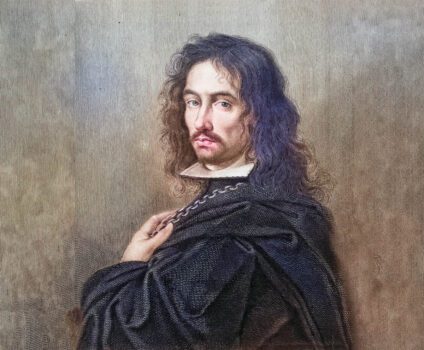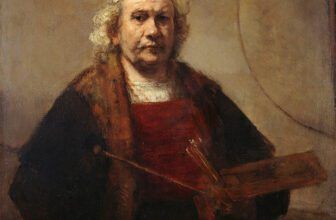What Is Luca Giordano Known For
In the vibrant and theatrical world of Baroque art, one name echoes with brilliance and boundless energy: Luca Giordano. Known for his dazzling speed, prolific output, and dramatic flair, Giordano painted a vivid narrative across the canvas of 17th-century Europe. From humble beginnings in Naples to prestigious commissions in Spain, his journey is a sweeping tale of genius, ambition, and artistic legacy.
Who Was Luca Giordano?
Luca Giordano was born on October 18, 1634, in Naples, Italy, into a world where the artistic flame of the Renaissance still burned bright, and the theatrical spirit of the Baroque era was just beginning to blaze. His father, Antonio Giordano, was a minor painter who recognized early on his son’s immense talent. It is said that Luca was so precociously gifted he earned the nickname “Luca Fa Presto” (Luca does it quickly), a testament to his astonishing speed with the brush.
He studied under Jusepe de Ribera, a Spanish Tenebrist painter based in Naples. Ribera’s dramatic chiaroscuro and stark realism influenced young Giordano, but he later expanded his visual language by absorbing the grandeur of Peter Paul Rubens, the elegance of Anthony van Dyck, and the monumental style of Michelangelo.
Over the years, Giordano developed a highly personal and versatile style, combining the intense drama of Caravaggio, the coloristic brilliance of Titian, and the swirling dynamism of Baroque theatricality. He would go on to become one of the most celebrated and prolific painters of his time.
Giordano is best known for his grandiose religious and mythological compositions, executed with astonishing speed and technical virtuosity. His work bridges the emotionally charged Baroque and the graceful classicism of the Renaissance. He was equally comfortable with frescoes, oil paintings, and altarpieces, often working on large-scale projects that required immense coordination and creative vision.
What truly set Giordano apart was his prolific output, he is believed to have produced thousands of works in his lifetime, making him one of the most productive artists in history. His stylistic flexibility also made him a sought-after artist by patrons across Italy and Spain. Whether in Neapolitan churches, Florentine palaces, or Spanish cathedrals, Giordano left behind a legacy of awe-inspiring visual splendor.
The Story Behind Luca Giordano’s Rise to Fame
Luca Giordano’s career can be broadly divided into three phases: his Neapolitan beginnings, his Florentine and Venetian sojourn, and his Spanish court period.
1. The Neapolitan Foundations
Giordano began his career in Naples, a city rich with artistic influences from across Europe. He started by imitating Ribera’s Tenebrist style but quickly broke free to embrace a more luminous and fluid aesthetic. By the 1650s, Giordano’s talent was undeniable. He received numerous commissions from local churches, producing altarpieces and ceiling frescoes that dazzled with their drama and divine light.
2. Flourishing in Florence and Venice
In the 1680s, Giordano traveled extensively in central and northern Italy, particularly to Florence and Venice, where he absorbed the works of Veronese, Tintoretto, and Titian. His style grew even more exuberant, infused with brilliant colors and dynamic compositions. During this time, he painted a series of mythological and allegorical works that established him as a master of both religious and secular themes.
3. The Spanish Court Painter
In 1692, Giordano reached the pinnacle of his career when he was invited by King Charles II of Spain to work as a court painter in Madrid. For the next ten years, he produced a staggering number of works for the Spanish crown, including frescoes for the Escorial, the Buen Retiro Palace, and the Church of San Lorenzo. His Spanish period was marked by opulent compositions and a lighter, more rococo style that foreshadowed the 18th century.
He returned to Naples in 1702 and continued to paint until his death in 1705, leaving behind a legacy unmatched in its scale and variety.
Luca Giordano’s Most Famous Paintings
Though Giordano painted thousands of works, several have stood the test of time as masterpieces of Baroque art:
1. The Fall of the Rebel Angels (c. 1666)
Housed in the Palazzo Medici Riccardi in Florence, this dynamic fresco depicts a celestial battle between good and evil with angels cascading from heaven in a tumultuous whirl of bodies and light. It showcases Giordano’s mastery of movement and drama.
2. Christ Expelling the Traders from the Temple (c. 1670)
This painting exemplifies Giordano’s theatrical style, figures twist and react with dramatic gestures as Christ drives out the money changers. The emotional intensity and vibrant palette make it one of his most reproduced religious works.
3. The Apotheosis of the Medici Family (c. 1684)
Another fresco masterpiece in the Palazzo Medici Riccardi, this work glorifies the Medici dynasty with allegorical grandeur, heavenly ascension, and ornate architectural illusions.
4. The Triumph of Judith (c. 1703)
This powerful depiction of the biblical heroine Judith is noted for its bold composition and luminous detailing. Judith’s figure exudes both grace and strength, encapsulating Giordano’s ability to combine beauty with narrative depth.
5. The Dream of Solomon (1693–1695)
Painted for the Escorial Monastery in Spain, this fresco illustrates King Solomon’s divine dream with classical elegance and spiritual gravity. It’s one of his most celebrated Spanish works.
What Is the Most Expensive Painting by Luca Giordano?
Although Giordano’s works have not reached the astronomical prices of artists like Caravaggio or Rembrandt, his paintings still command significant sums at auctions.
The most expensive Giordano painting sold at auction is believed to be:
“Apollo and Marsyas”, which was sold at Sotheby’s in 2010 for approximately $2.2 million USD.
This mythological scene captures the dramatic punishment of Marsyas by the god Apollo, rendered with masterful anatomy and emotional intensity. The price reflects the increasing appreciation of Baroque art in the global market and Giordano’s enduring legacy.
How Many Paintings Did Luca Giordano Create?
It is estimated that Luca Giordano produced over 5,000 works during his lifetime. This staggering number includes oil paintings, frescoes, altarpieces, sketches, and drawings. His ability to work quickly and efficiently, without sacrificing quality, allowed him to meet a near-constant demand from patrons.
Giordano often worked with a studio of assistants, but even so, his personal output remains one of the most voluminous in Western art history. His works spanned nearly every genre: sacred, mythological, historical, allegorical, and portraiture.
Luca Giordano’s Legacy
Luca Giordano’s influence extended far beyond his own lifetime. His stylistic versatility, technical prowess, and prolific nature made him a bridge between the Baroque and the emerging Rococo movement.
Artistic Legacy
Giordano’s frescoes laid the groundwork for 18th-century decorative painting, particularly in the courts of Europe.
His fluid brushwork influenced artists such as Francesco Solimena, Sebastiano Conca, and Corrado Giaquinto.
In Spain, his decade-long residence inspired a generation of local artists, merging Italian Baroque with Spanish traditions.
Cultural Legacy
Giordano elevated Neapolitan art on the international stage.
His work is still celebrated today for its narrative richness, elegance, and theatrical composition.
In short, Giordano’s legacy is not only in the beauty of his art but in how he democratized it, bringing Baroque splendor to churches, palaces, and public spaces alike.
Where Are Luca Giordano’s Paintings Located?
Giordano’s artworks are dispersed across the globe, gracing the halls of the most prestigious museums, churches, and royal collections. Some of the most notable locations include:
Italy
Naples: The Museo di Capodimonte and numerous churches house dozens of his paintings and frescoes.
Florence: The Palazzo Medici Riccardi features several of his monumental frescoes.
Venice: His works appear in both public and private collections.
Spain
Madrid: The Prado Museum holds many of his Spanish-period paintings, including religious and mythological themes.
El Escorial: Giordano’s frescoes for the Monastery of San Lorenzo remain a major highlight.
United Kingdom
The National Gallery, London: Home to several of Giordano’s dramatic oil paintings.
The Wallace Collection: Features baroque canvases of mythological subjects.
United States
The Metropolitan Museum of Art, New York: Holds a number of his oil paintings, reflecting his mythological and religious repertoire.
Los Angeles County Museum of Art (LACMA) and The Getty Museum: Occasionally exhibit Giordano’s work in Baroque exhibitions.
Other Notable Locations
Louvre Museum, Paris
Hermitage Museum, St. Petersburg
Museum of Fine Arts, Boston
Museum of the Real Academia de Bellas Artes de San Fernando, Madrid
The story of Luca Giordano is a vibrant tapestry of artistic genius, relentless ambition, and transcendent beauty. Born in the tumultuous streets of Naples and crowned in the gilded halls of Spain, he carved out a place in history not only through his speed but through his mastery of light, drama, and human emotion.
In every flick of his brush, Giordano captured the soul of the Baroque: passionate, grand, and gloriously alive. His thousands of paintings remain a testament to an era and a man whose art was as limitless as his imagination.
Whether seen in a Neapolitan church or a world-class museum, a Luca Giordano painting speaks across centuries, whispering stories of divine battles, royal triumphs, and the unquenchable fire of human creativity.




